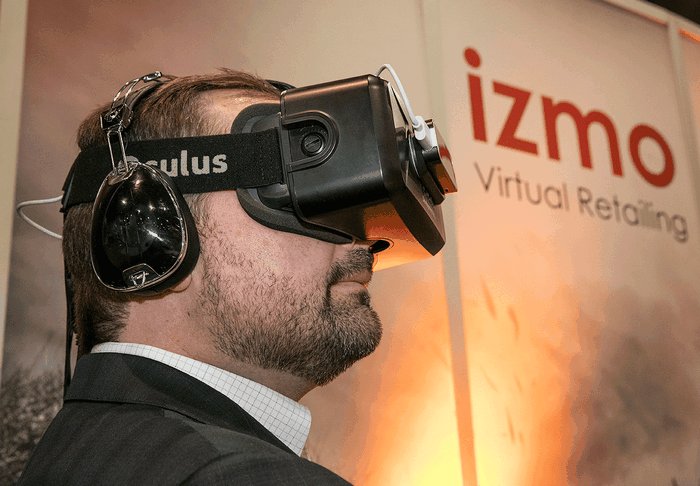With a wave of virtual-reality headsets hitting the market this year, retailers and car-shopping services are being urged to consider the gadgets as the entertainment and shopping medium of the future, because it delivers a more immersive experience than watching a video.
California-based Evox Images, known in the auto industry for the 360-degree images used on car-shopping websites, has built an app for Samsung's Gear VR device to show the power of the platform.
The app, which has been downloaded 250,000 times since its debut, allows a user wearing a plastic headset to virtually sit inside a Volkswagen GTI. The user can look around by turning his head and swiping a touchpad on the side of the viewer to, say, change the seats from leather to plaid cloth.
Build and drive, virtually
David Falstrup, CEO of Evox, said in an interview at the National Automobile Dealers Association convention that he wants dealers to use VR headsets as a shopping tool that helps customers visualize their choices.
"We're working to transform how people shop for cars, so that VR supports the dealers and also supports a cross-brand shopper," Falstrup said. "We don't see anybody else that could deliver this, because of the time it takes to generate a library of images to fuel it and the patentable technology to deliver it effectively."
Samsung's Gear VR, which costs $100, uses the screen of a smartphone to trick the eyes into perceiving a 3-D image. It was the first modern VR headset to go on sale to the public, but Facebook-owned Oculus VR is now shipping a $600 competitor called the Oculus Rift with a built-in screen. This fall, Sony plans to launch a $400 add-on headset for the PlayStation 4 gaming console.
Showing the promise of the technology, Audi showed a VR system this year at the CES technology expo that would allow customers to build their dream car, then imagine it in various scenic locations. Audi plans to install the system in a number of world markets, with the first installation in the U.S. this year.
Volvo has offered customers a virtual test drive of the XC90 using Google Cardboard, a simple $15 headset that allows customers to slip a smartphone inside a cardboard case with two plastic lenses for a 3-D effect.
And in late 2015, Mini sponsored a cinematic six-minute VR video called Backwater about a diamond heist. Distributed by The New York Times, which sent 1 million Cardboard devices to subscribers to promote its VR app, the video featured a bright-yellow Mini as a getaway vehicle.
"Up in the air'
Evox produced Mini's video player, but the company has a budding rival in San Francisco-based Izmocars, which argues that computer-generated images will deliver a better experience than Evox's photogs.
Izmocars, a division of Izmo, gave demonstrations using an Oculus Rift headset at the convention. Users rode inside a virtual Honda HR-V through a cartoonish seaside town, with Honda's Asimo robot behind the wheel.
Developing this sort of marketing content costs $300,000 or $400,000 per car, Izmocars President Tej Soni said in an interview at the convention. He said automakers may be willing to fund such projects for their own purposes, such as experiential marketing at festivals, and work with dealers to have VR headsets installed in showrooms.
Yet the company is not rushing to market. It is impossible to predict which type of viewer customers will gravitate to -- or whether the technology will be widely adopted at all.
"We don't know what's going to happen," Tej said. "VR is up in the air."
Related News

